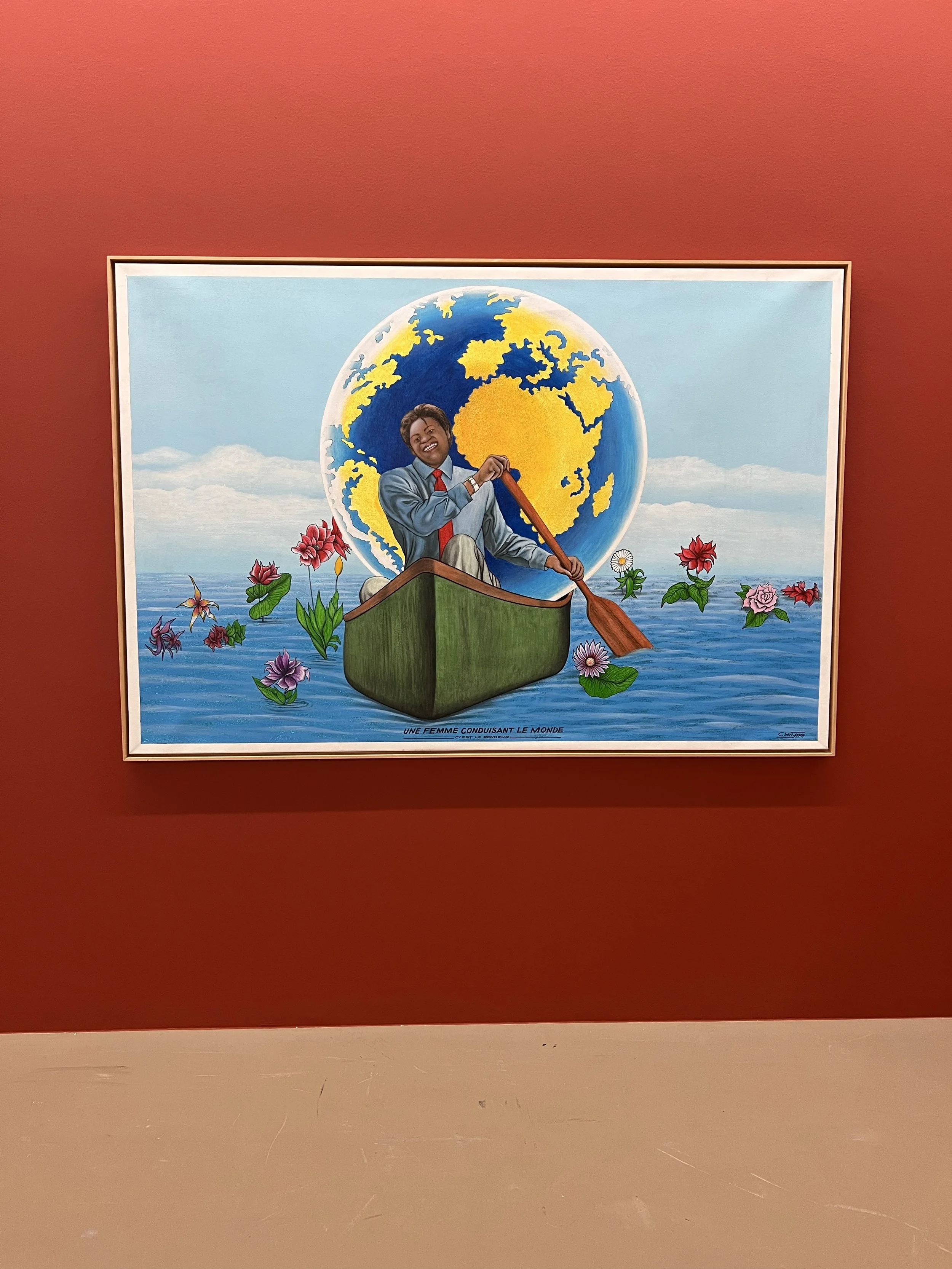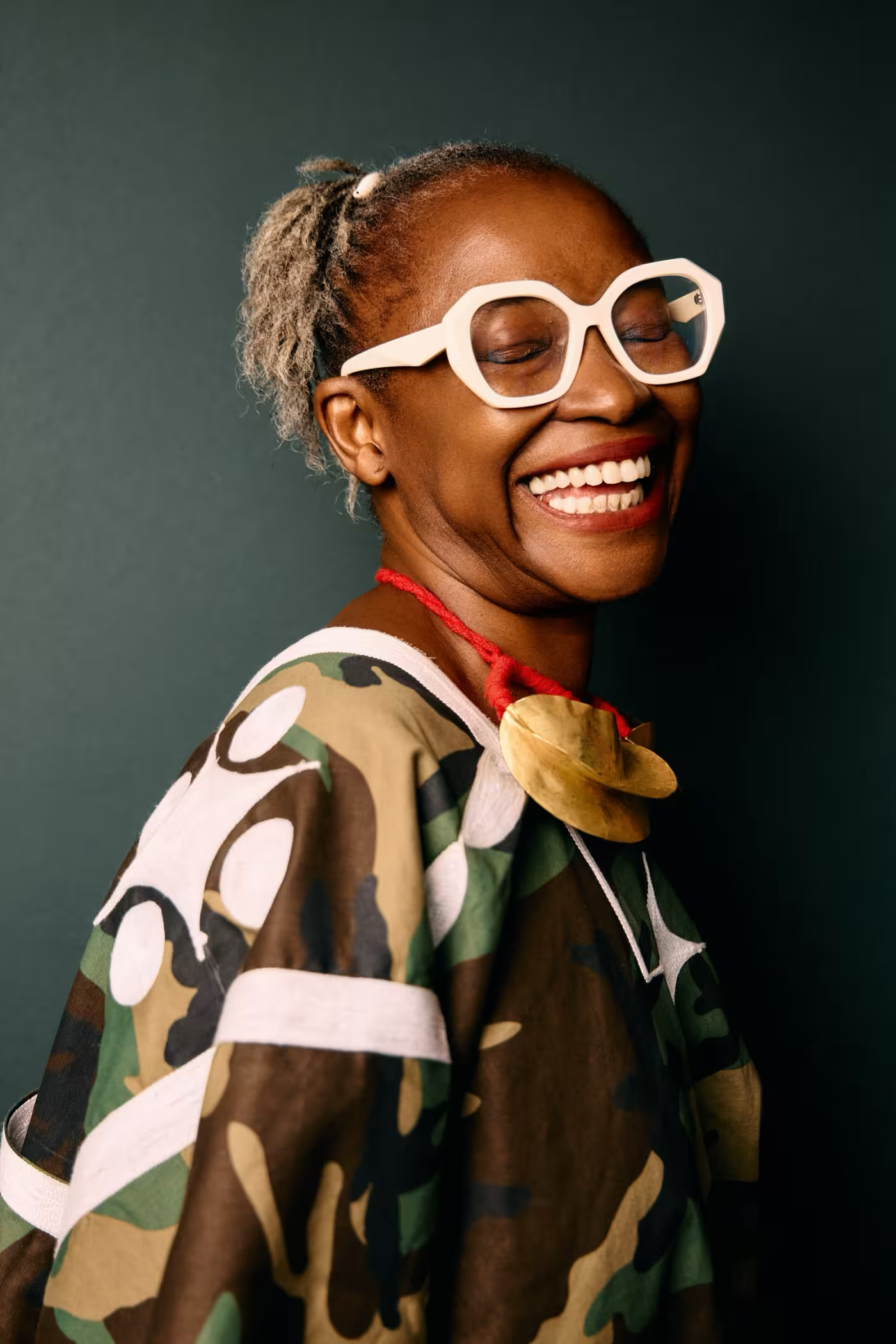Koyo Kouoh: Homage to a life of choices that has a lasting impact
Koyo Kouoh, who passed away in May 2025 at the age of 58, leaves behind a profound legacy as one of Africa’s most influential curators, institution-builders, and cultural voices. Her journey from Cameroon to Switzerland, Senegal, and finally South Africa, is a testament to her resilience, vision, and unwavering commitment to elevating African art and artists on the global stage.
Upbringing and early influences
Born Marie-Nöelle Koyo Kouoh on December 24, 1967, in Douala, Cameroon, she spent her early years in the country of indomitable lions with vibrant artistic heritage. At age 13, her family relocated to Zurich, Switzerland, where she would remain for over a decade. This multicultural upbringing-rooted in the traditions of Cameroon and the cosmopolitan environment of Switzerland-shaped her worldview and nurtured a deep appreciation for cultural diversity.
Madame Koyo’s early academic pursuits were in business administration and banking in Zurich, complemented by cultural management studies in France. Fluent in French, German, English, and Italian, she was well-equipped for a life accross continents and cultures. Yet, even as she embarked on a conventional path, her curiosity and empathy led her to get involved in critical matters as supportint migrant women, an experience that deepened her commitment to social justice and inclusion.
A pivotal moment came in the mid-1990s when, inspired by Margaret Busby’s anthology Daughters of Africa, she co-edited Töchter Afrikas, a German-language collection of writings by women of the African diaspora. This project marked her first major engagement with the power of narrative and representation; a theme that would define her curatorial practice.
Career: building Institutions and narratives
Madame Koyo journey into the art world was cristalized by a visit to Dakar, Senegal, in 1995, where she interviewed filmmaker Ousmane Sembène and encountered the city’s dynamic art scene. Frustrated by the anti-Black racism she experienced in Europe, she chose to make Dakar her home, immersing herself in its creative scene and forging a new path as an independent curator under the mentorship of Issa Samb.
In 2008, she founded the RAW Material Company, an avant-garde center for art, knowledge, and society in Dakar. RAW Material company became a strategic platform for emerging and established artists, curators, and thinkers from across Africa and the diaspora, offering residencies, exhibitions, and research programs that challenged conventional narratives and fostered critical dialogue. Madame Koyo’s vision was clear: “You have to set up your own house and build your own home rather than trying to enter someone else’s castle” she said in an interview with Barnabas Ticha Muvhuti. Through RAW, she empowered creatives to define their own trajectories, independent of external validation.
Her curatorial achievements extended far beyond Senegal. Madame Koyo curated major exhibitions and biennales across Europe, Africa, and the United States, including Body Talk: Feminism, Sexuality and the Body in the Works of Six African Women Artists (Wiels, Brussels, 2015), Still (the) Barbarians (EVA International, Ireland, 2016), and Dig Where You Stand (Carnegie International, Pittsburgh). She also played a pivotal role in the 1:54 Contemporary African Art Fair and served on the curatorial teams for documenta 12 and 13.
In 2019, Kouoh was appointed Executive Director and Chief Curator of Zeitz Museum of Contemporary Art Africa (Zeitz MOCAA) in Cape Town, South Africa-the largest museum of contemporary African art on the continent. Taking the helm during a period of institutional crisis, she revitalized Zeitz MOCAA, guiding it through scandal and the Covid-19 pandemic, and transforming it into a globally recognized beacon for African creativity. Her exhibitions, such as When We See Us: A Century of Black Figuration in Painting, were acclaimed for their scholarly rigour and community engagement, often coupled to educational programs and symposium that brought together leading voices from across the art world.
At the time of her passing, Madame Koyo was about to announce the agenda of the upcoming Venice biennale as the first African woman to lead the curatorial vision, a historic milestone that underscored her stature as a global cultural leader.
Chéri Samba
Une femme conduisant le monde, 2017
Style: understated elegance and sartorial philosophy
Madame Koyo’s personal style was as distinctive as her curatorial voice. She described her signature as “understated elegance,” rooted in a philosophy that valued the integrity of materials, craftsmanship, and the stories behind what she wore. “I believe that design should be visually stimulating and aesthetically enriching, reflecting the origin of its creation. Clothing should convey a message,” she explained to Charlene Prempeh in an interview for the Financial Times.
She would prefer garments crafted from natural fibers and was particularly drawn to designers like Lamine Badian Kouyaté of Xuly Bët, whose bold designs celebrated Black women’s bodies and African creativity. For Madame Koyo, style was not merely about appearance but an expression of identity, intellect, and cultural pride. Her sartorial choices-often featuring vibrant colors, sculptural forms, and artisanal details-embodied the elegance of spirit she admired in the west african culture from Senegal to Mali and more.
Voice: advocacy, generosity, and vision
Kouoh’s curatorial approach was unapologetically pan-African, feminist, and activist, characterized by a spirit of generosity, inclusivity, and warmth. She fiercely championed African artists and institutions, insisting on the importance of self-determination and the need to build sustainable structures for creativity on the continent.
Her exhibitions were meticulously researched and designed to spark critical conversations, often foregrounding themes of identity, history, and social justice. She was a mentor to countless artists, curators, and cultural practitioners, especially women, inspiring them to pursue their ambitions with confidence and integrity.
Legacy: a lasting impact
Madame Koyo’s legacy is immense. She leaves behind a transformed landscape for contemporary African art, marked by stronger institutions, empowered artists, and a more inclusive global discourse. Her leadership at RAW Material Company and Zeitz MOCAA set new standards for advocacy, excellence, and community engagement. Through her writing, exhibitions, and mentorship, she nurtured a generation of creatives who will carry her vision forward.
As South African photographer Trevor Stuurman reflected : “Mama Koyo loved loudly, boldly and without apology, she saw people, not only for who they were, but for who they could become”. Her absence is deeply felt, but her spirit endures in the vibrant, interconnected world of African art she helped to build.


